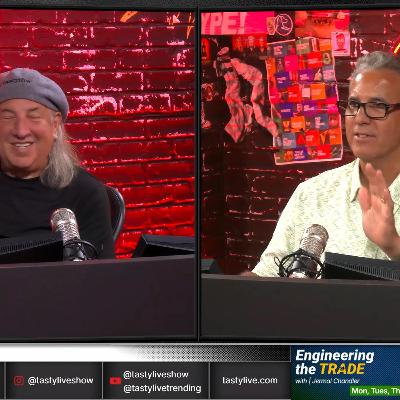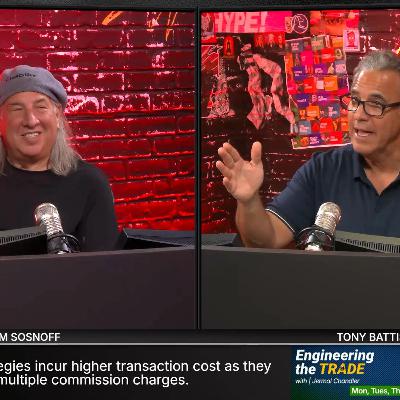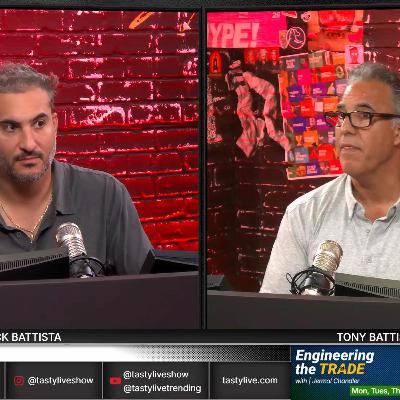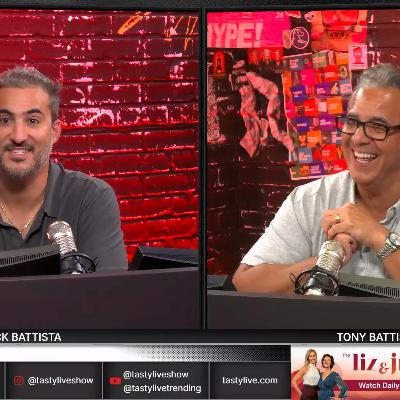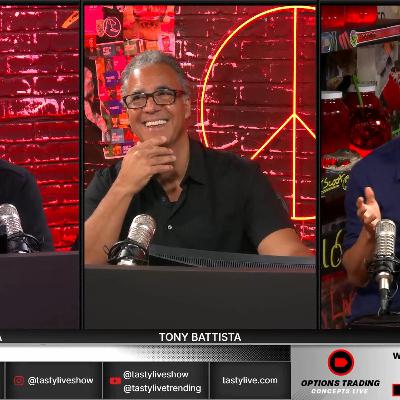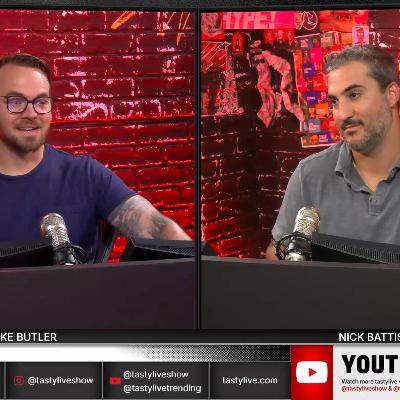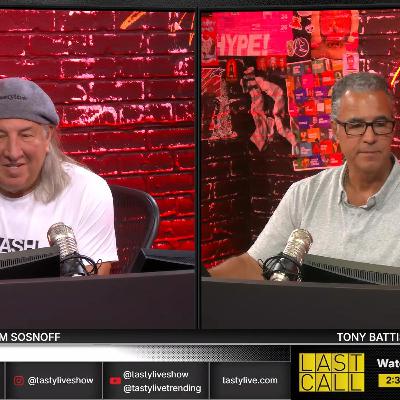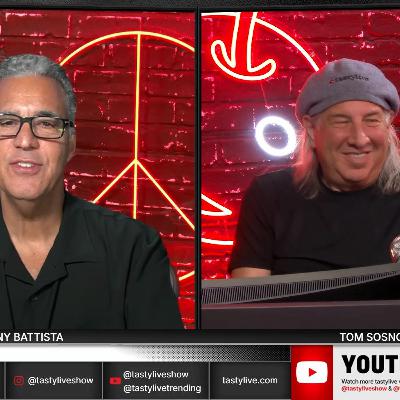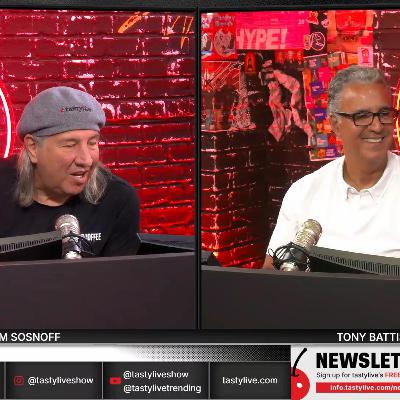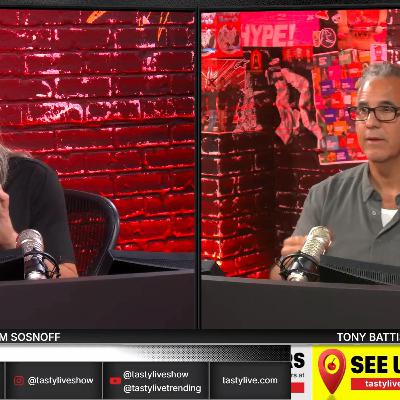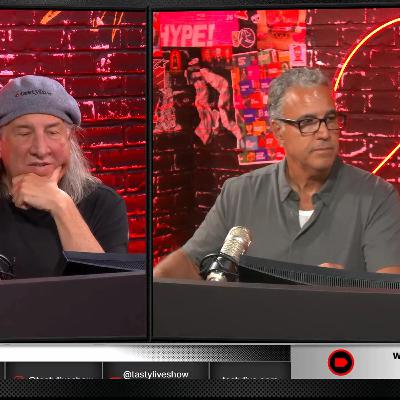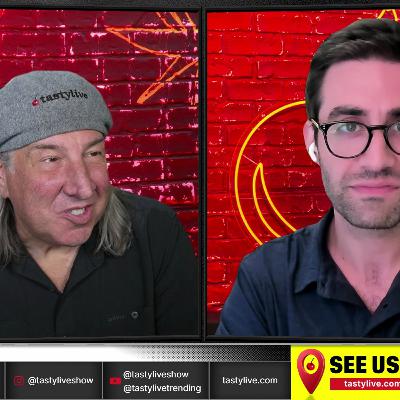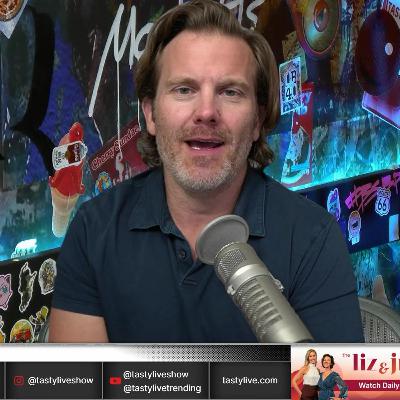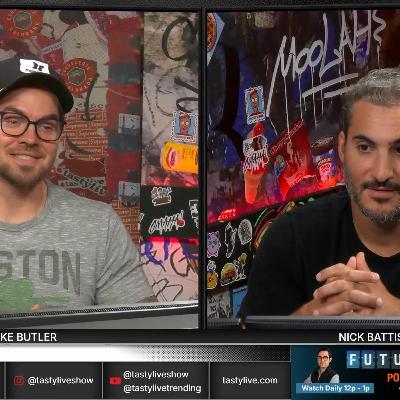Discover tastylive: The Skinny On Options Math
tastylive: The Skinny On Options Math
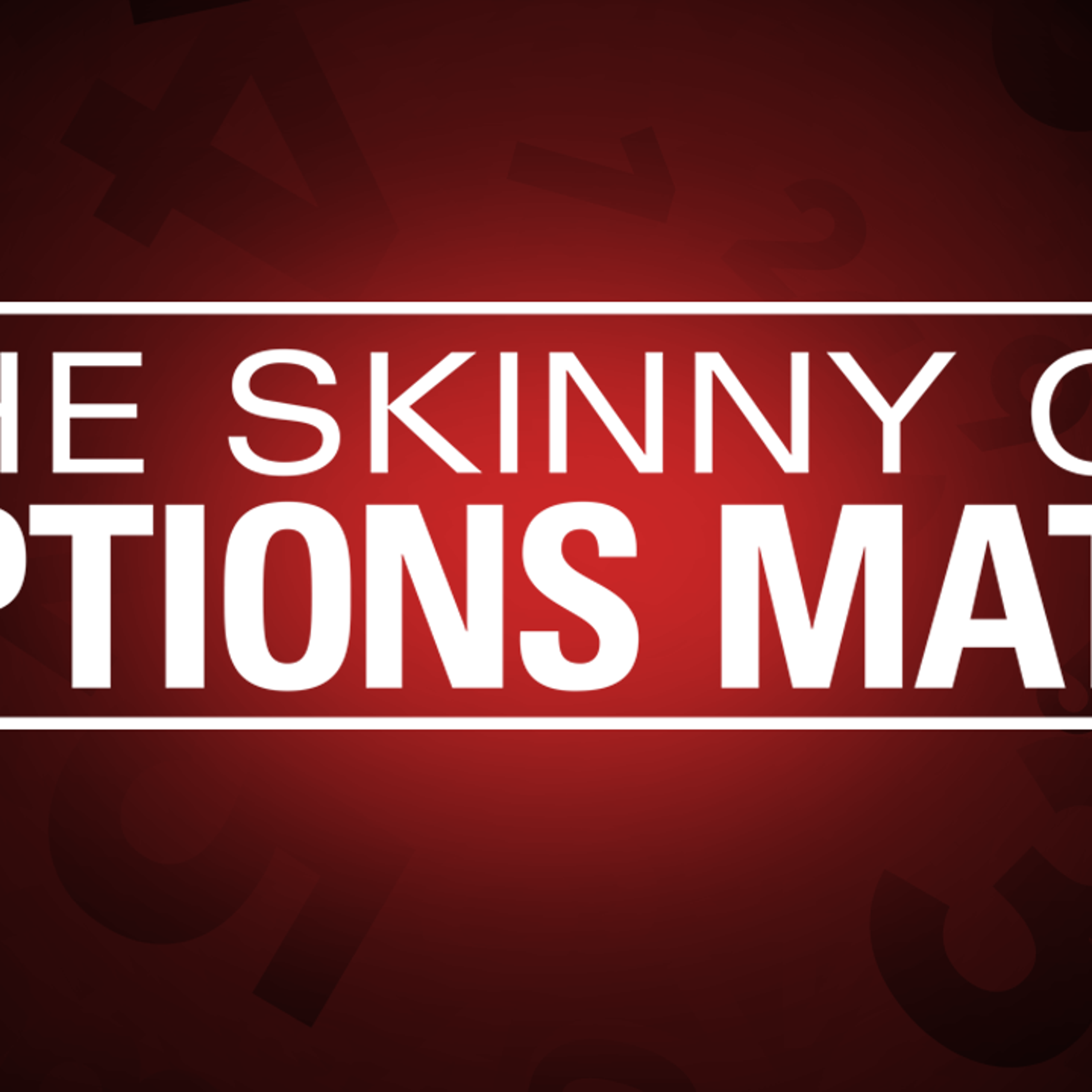
tastylive: The Skinny On Options Math
Author: tastylive
Subscribed: 7Played: 339Subscribe
Share
© ℗ & © copyright 2013 - 2025 tastylive. All Rights Reserved.
Description
Options pricing models all revolve around probability theory. Though the math is done for you by your trading platform, we believe that understanding the number crunching behind the scenes will jump-start your trading. Join us as we show you how it's done.
2277 Episodes
Reverse
Hosts Tom and Tony welcomed researcher Kai to discuss a deceptively volatile week where Friday's weak jobs report sent VIX to 20 and boosted Fed rate cut expectations to 92%, yet major indices ended essentially unchanged. Google dominated headlines with its antitrust victory driving an 11% weekly gain worth more than Netflix, Disney, Intel, and IBM combined. The precious metals rally continued with gold hitting new all-time highs while the gold-silver ratio dropped to 88 from previous highs above 100. Hardware and AI stocks led gainers (WDC up 12%, AVGO, MU up 11%) while Lululemon crashed 16% on earnings disappointment. Tom expressed strong negative sentiment toward Lululemon's management while considering potential trades in Google and bonds. Upcoming week features CPI/PPI data Wednesday-Thursday and earnings from Oracle (Tuesday) and Adobe (Friday), with Tom emphasizing the importance of intraday opportunities despite low overall implied volatility.
In this segment, Tom and Tony explore multiple strategies for generating income through options trading. The discussion focuses on five key approaches: covered calls (turning 50-50 shots into favorable 2:1 odds), poor man's covered calls (buying long-dated options while selling shorter-term ones), omnidirectional put ratio spreads (buying one put at expected move while selling two further out-of-the-money puts), zebra strategies (synthetic long positions with limited downside), and risk reversals (selling puts to fund call purchases).
Each strategy was presented with practical examples and detailed breakdowns of debit/credit structures, profit mechanisms, risk levels, advantages, and disadvantages. They emphasized how these approaches can improve probability of profit beyond standard 50-50 stock positions while providing greater capital efficiency.
The segment explored five effective methods to establish short positions in the market beyond simply selling stock. Using QQQ as an example, the team demonstrated how alternative strategies can achieve similar results with reduced capital requirements.
While shorting 100 shares of QQQ would require nearly $29,000 in capital, a synthetic short (selling a call and buying a put at the same strike) achieves the same delta exposure for less than half the capital ($12,783). More capital-efficient alternatives include skewed iron condors, short call spreads, and long put spreads.
For consistent results, research suggests selling 20-30 delta call spreads 45 days out and managing at 50% profit provides optimal risk-reward. The presentation emphasized taking profits early (25-50%) or managing early, as the final half of potential profit typically carries 80% of the risk.
Stocks give you a single way to take risk (long or short shares).
Options provide a toolkit of strategies that let you:
adjust probability of profit, define risk and reward precisely, and scale positions with less capital compared to stock ownership.
Hosts Nick and Tony examined gold's correlation patterns with stocks and bonds, revealing that despite gold trading near record highs alongside market peaks, the 20-year correlation with S&P 500 sits at exactly zero. Current correlation stands at -0.25 (essentially uncorrelated), with five-year and 12-month averages of 0.13 and 0.12 respectively, all indicating minimal relationship. Even during major crises like 2008 and 2020, correlations remained low, challenging the belief that gold provides reliable downside protection.
The analysis extended to gold-bond relationships, finding surprisingly weak correlation (0.07) during the 2008 crisis, contradicting assumptions about both assets serving as safe havens. Nick emphasized that true portfolio diversification comes from position sizing and strategy diversification rather than asset class mixing, since "when they sell assets, they sell assets" regardless of traditional classifications.
In this episode of Options Jive, the discussion focuses on the effectiveness of trading strategies involving iron condors in the SPY (SPDR S&P 500 ETF Trust). The presenters evaluate whether traders should increase contract volume or widen the wings to manage risk and enhance profitability. Based on a 12-year study, the findings suggest that wider wings generally lead to improved win rates and lower tail risks compared to simply increasing the number of contracts. Ultimately, the conversation emphasizes the importance of aligning trading strategies with individual risk tolerance and market conditions.
Hosts Nick and Tony welcomed researcher Kai to discuss a relatively quiet week where S&P gained only 0.3% despite Friday's volatility surge, with Powell's rate cut signals driving optimism and the Dow finally breaking through to new highs. Ethereum's surge toward all-time highs caught attention as it continues outperforming Bitcoin, while Palantir dominated losers with a 17% decline after its massive run-up from the 70s to 190s earlier this year. The upcoming NVIDIA earnings Wednesday represents the week's focal point, though Nick expressed concern it could be a "nothing burger" with volatility collapse rather than the big move traders expect. Overall earnings season maintains its characteristic 50-50 split with zero average returns across 3,200+ companies, while implied volatility got "smashed across the board" with 391 of 450 S&P stocks seeing lower IV on Friday.
In this segment of Options Jive, the hosts explain how to estimate the expected daily move of an underlying asset using options premiums. They emphasize the importance of implied volatility (IV) and provide a simplified formula: expected move equals price times IV times the square root of days to expiration over 365 (IV%/19). They highlight that while this method can lead to overestimations, it serves as a quick calculation tool for traders. Specific strategies for finding previous expected moves during earnings announcements are also discussed, along with the need for adjustments based on market conditions.
In this episode of Option Jive, Tom Sosnoff and his team discuss the implications of implied volatility rank (IVR) in options trading. They emphasize that while current IVR levels can indicate premium selling opportunities, it's crucial to consider the underlying asset and its earnings announcements. The conversation covers statistical analysis of IVR across various equities and ETFs, highlighting that equities typically display higher IVR, particularly as they approach earnings dates. The hosts stress the importance of understanding these metrics before making trading decisions.
Tom Sosnoff and Tony Battista discuss the dynamic of theta in options trading during the Option Jive segment. They emphasize that understanding the theta ratio is crucial for predicting daily profits in premium selling. The conversation covers the importance of managing positions at 21 days to expiration and how this can mitigate volatility while improving long-term returns. The hosts highlight the challenges of achieving a daily theta of 1%, especially in low volatility environments, reinforcing the need for strategic management in options trading.
In this episode of Options Jive, Tom Sosnoff discusses market volatility, focusing on the S&P 500 and NASDAQ futures. He highlights the significance of the VIX, particularly the one-day and nine-day versions, which react more sharply to market movements compared to the standard 30-day VIX. The conversation delves into the unique signals provided by shorter-term VIX indices, making them valuable for zero-day-to-expiration options trading. Various market volatility indices are also reviewed, underscoring their utility in enhancing trading strategies.
This Options Jive discusses strategies for improving cost basis in options trading, emphasizing their importance for enhancing probability of profit. Key concepts include using covered calls to improve the effective price (cost basis) of long positions and short positions. The speakers detail the mechanics of these strategies, advocating for trades around expected moves for better outcomes. They also explore options like diagonal spreads and covered strangles that integrate multiple components to maximize capital efficiency. The segment underscores the necessity of understanding risk parameters, including delta and theta exposure.
Research shows laddering options across multiple expiration cycles significantly reduces portfolio volatility while improving success rates. Instead of selling multiple contracts in a single expiration, spreading positions across 30, 60, and 90-day expirations creates a more stable P&L curve.
Analysis of S&P (SPY) options demonstrated that laddered puts showed 25% lower daily P&L volatility compared to concentrated positions. The 90-day positions exhibited nearly half the volatility of 30-day positions.
The strategy works equally well with strangles, reducing volatility by 7 percentage points. While laddering may slightly reduce average profits, it improves success rates and decreases maximum losses - potentially allowing traders to remain in positions during volatile market conditions.
In this session, the speakers dissect market trends, particularly focusing on the S&P and high-profile stocks like NVIDIA (NVDA) and AMD (AMD). They note the significant closing premium for the S&P, suggesting potential market tops. The discussion also highlights the frothy conditions surrounding the "MAG seven" stocks, emphasizing that, while frothy, these aren't in bubble territory akin to past market crashes. A cautious view on the IPO market surfaces, with concerns about speculative trading driving rapid price changes.
Comments
 United States
United States



